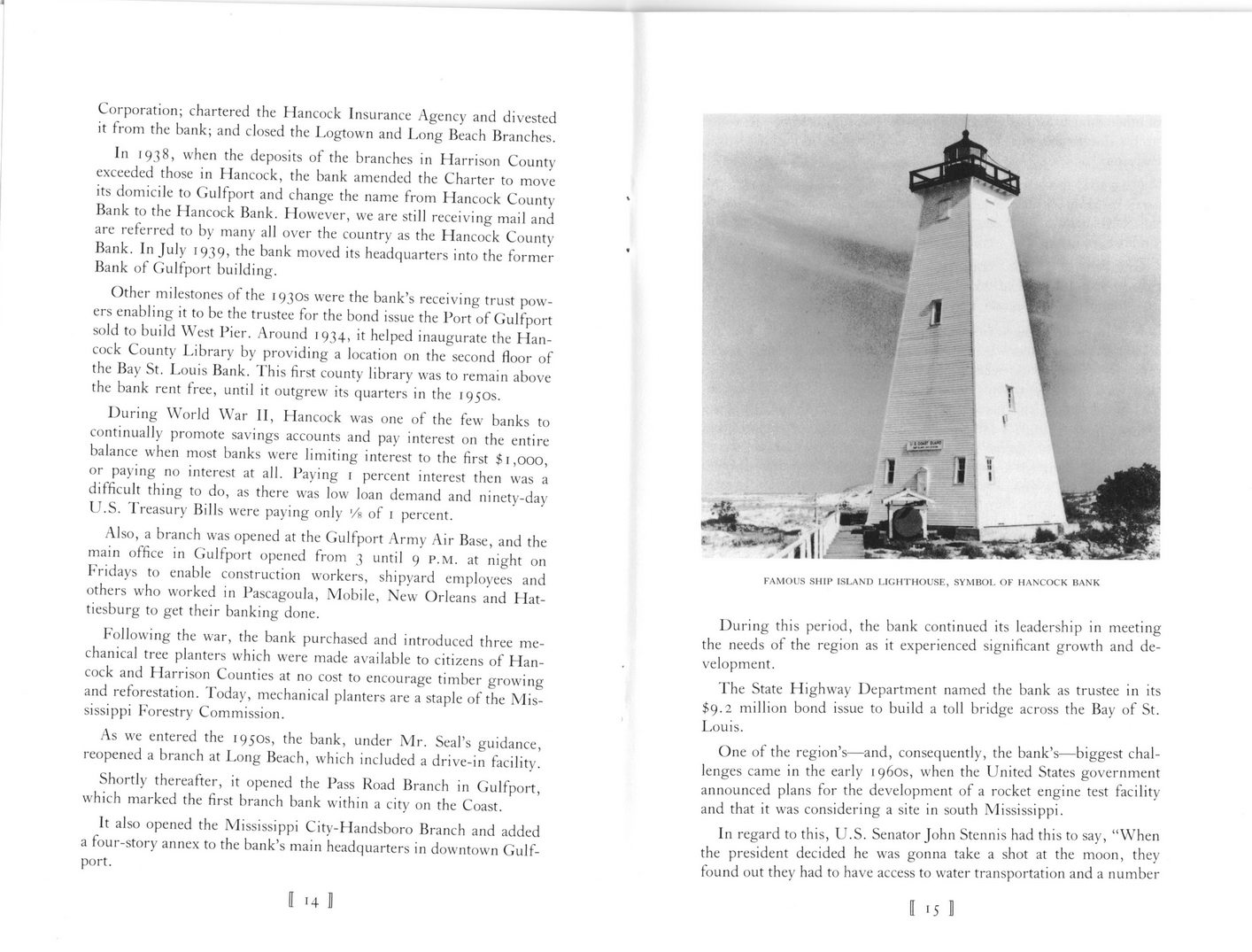This text was obtained via automated optical character recognition.
It has not been edited and may therefore contain several errors.
Corporation; chartered the Hancock Insurance Agency and divested it from the bank; and closed the Logtown and Long Beach Branches. In 1938, when the deposits of the branches in Harrison County exceeded those in Hancock, the bank amended the Charter to move its domicile to Gulfport and change the name from Hancock County Bank to the Hancock Bank. However, we are still receiving mail and are referred to by many all over the country as the Hancock County Bank. In July 1939, the bank moved its headquarters into the former Bank of Gulfport building. Other milestones of the 1930s were the bank’s receiving trust powers enabling it to be the trustee for the bond issue the Port of Gulfport sold to build West Pier. Around 1934, it helped inaugurate the Hancock Count}' Library by providing a location on the second floor of the Bay St. Louis Bank. This first county library was to remain above the bank rent free, until it outgrew its quarters in the 1950s. During World War II, Hancock was one of the few banks to continually promote savings accounts and pay interest on the entire balance when most banks were limiting interest to the first $1,000, or paying no interest at all. Paying 1 percent interest then was a difficult thing to do, as there was low loan demand and ninety-day U.S. Treasury Bills were paying only ‘/a of 1 percent. Also, a branch was opened at the Gulfport Army Air Base, and the main office in Gulfport opened from 3 until 9 p.m. at night on Fridays to enable construction workers, shipyard employees and others who worked in Pascagoula, Mobile, New Orleans and Hattiesburg to get their banking done. Following the war, the bank purchased and introduced three mechanical tree planters which were made available to citizens of Hancock and Harrison Counties at no cost to encourage timber growing and reforestation. Today, mechanical planters are a staple of the Mississippi Forestry Commission. As we entered the 1950s, the bank, under Mr. Seal’s guidance, reopened a branch at Long Beach, which included a drive-in facility. Shortly thereafter, it opened the Pass Road Branch in Gulfport, which marked the first branch bank within a city on the Coast. It also opened the Mississippi City-Handsboro Branch and added a four-story annex to the bank’s main headquarters in downtown Gulfport. FAMOUS SHIP ISLAND LIGHTHOUSE, SYMBOL OF HANCOCK BANK During this period, the bank continued its leadership in meeting the needs of the region as it experienced significant growth and development. The State Highway Department named the bank as trustee in its $9.2 million bond issue to build a toll bridge across the Bay of St. Louis. One of the region’s—and, consequently, the bank’s—biggest challenges came in the early 1960s, when the United States government announced plans for the development of a rocket engine test facility and that it was considering a site in south Mississippi. In regard to this, U.S. Senator John Stennis had this to say, “When the president decided he w'as gonna take a shot at the moon, they found out they had to have access to water transportation and a number tt >5 1

Hancock Bank Leo-Seal-Leading-The-Way-(1987)-08